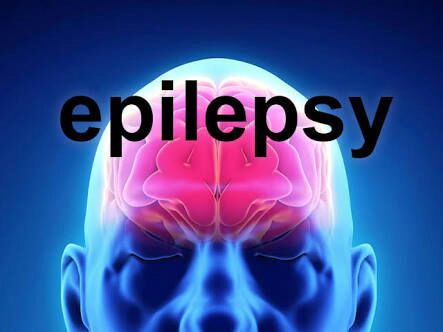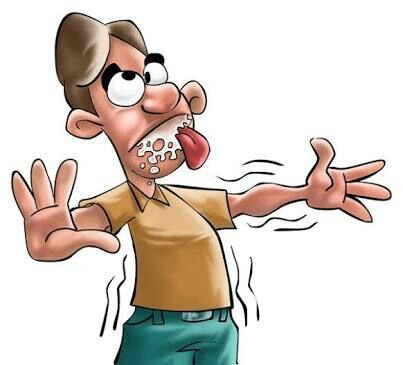 Epilepsy is a serious neurological disorder affecting children as well as adults. The patient experiences episodes of convulsive body movements medically termed as seizures. The seizures are typically described and observed as spasmodic, irregular body movements, affecting various muscle groups of body. It may present with varying intensity and duration, and different groups of muscles in different individuals, at different times.
Epilepsy is a serious neurological disorder affecting children as well as adults. The patient experiences episodes of convulsive body movements medically termed as seizures. The seizures are typically described and observed as spasmodic, irregular body movements, affecting various muscle groups of body. It may present with varying intensity and duration, and different groups of muscles in different individuals, at different times.
Typically, epilepsy or seizures occur due to abnormal electrical activity in the brain which is reflected on different groups of muscles.
Epilepsy is a chronic disease having a tendency to relapse periodically and for many years to life time, if not adequately treated.
Signs and symptoms of epilepsy
The most common symptom or a sign of epilepsy is recurrent seizures or convulsions.
Seizures are involuntary movements, like jerking or thrashing, or experiencing unusual

feelings or sensations, which can be associated with loss of consciousness or being unaware of things happening around.
One may experience and describe seizures in various ways, as it is often a subjective experience:
Before appearance of seizure may be hours or days ago, person can notice various changes in his behavior or mood.The relevant history can be obtained from friend or patient himself.The patient can also experience aura before the seizure attack, something like “déjà vu” phenomenon in which the patient feels that he has seen this before or lived this before or can smell strange things or see flashes of lights.
After a partial seizure there may be temporary weakness of the affected limb.
After generalized seizure the patient may feel awful with headache, myalgia, confusion, and a sore tongue.
It all happens because he transmission of the electrical activity between the brain cells pauses for a while manifesting as seizures.
Seizures could be of various forms; but for a given patient they tend to be stereotyped.
Generally seizures can also be caused due to decrease in sodium salts from the body, or due to high fever or even due to hypoxia.
The diagnosis could be stigmatizing and has implications for employment, insurance and driving.
Not everything that twitches is epilepsy; but tongue biting is very suggestive of epilepsy
Causes of epilepsy
There are several possible causes for epilepsy: They may be grouped as:
_Physical causes:
Trauma
Space occupying lesion
Stroke
Very raised blood pressure
Tuberous sclerosis
Metabolic causes:
Hypoglycemia (low sugar level)
Hyperglycemia (high sugar level)
Hypoxia low oxygen level)
Uremia
Hyponatraemia (low sodium level)
Hypernatraemia (high sodium level)
Hypocalcaemia
Liver diseases
Alcohol withdrawal
Drugs-phenothiazines,cocaine,benzodiazepines
Infections:
Encephalitis
Syphilis
Cysticercosis
HIV
Classification of epilepsy
The seizures that the patient experiences are of various forms, they are classified as below:
_Partial epilepsy:
In this, the patient may loose consciousness, there may be twitching or jerking of one single part like twitching of finger or fingers, or twitching of facial muscles. It happens because of the pausing of the electrical activity in the brain, which could be in one part, or can move to another part or may stay in one area until the seizure is over.
_Generalized seizure
Electrical disturbances occurring all over brain at same time are generalized seizures. They are further classified as follows:
a) Petit mal: the conversation is associated with brief pauses e.g.: suddenly stops talking in middle of the sentence, and then carries on where he left off. Usually seen in childhood.
b )Grand mal: has sudden onset, with loss of consciousness, limbs stiffened, and then they jerk and can feel drowsy post seizure.
c )Myoclonic jerk: sudden fall on the ground or giving up of the limb.
d )Atonic: becoming flaccid
e) Akinetic: usually associated with less motility of limbs like in infantile spasms
Diagnosis of epilepsy
Obtaining authentic history from the patient and the witness
Establishment of the cause
Past medical history or family history
Blood glucose both fasting and post-food
CBC
Calcium and phosphorus levels
Imaging: CT scan, and MRI (also MRI angiography) is indicated to evaluate the structural changes in brain
Electroencephalogram (EEG) is suggested for non conclusive status.
Treatment of epilepsy
a. Conventional treatment:
Diagnosing epilepsy in error can be hazardous as conventional therapy has significant side-effects.
Carbamazepine: Usually used as a first line of treatment in partial seizures.
Toxic effects: rash, nausea, diplopia, dizziness, fluid retention, Hyponatraemia, blood dyscrasias
Sodium valproate: Usually used as a first line of treatment in generalized seizure.
Toxic effects: sedation, tremors, increased weight, hair thinning, ankle swelling, hyperammonaemia, liver failure.
Phenytoin: No longer used as a first choice of drug in partial a swell as generalized epilepsy
Due to its toxicity: nystagmus, diplopia, tremors, dysarthria, ataxia.
Toxic effects: decrease intellect, depression, impaired drive, polyneuropathy, acne,
Gum hypertrophy, blood dyscrasias.
Surgical treatment in epilepsy:
About one third of the patients suffering from epilepsy opt for surgical intervention due to failure in antiepileptic medication. Few of these patients experience seizure control after removal of the affected part of the brain causing seizure. This is called as seizure surgery.
Usually the surgery is done to get rid of seizures but the purpose of surgery is not to get off antiepileptic drugs because even after successful epileptic surgery the patient has to take antiepileptic drugs to remain seizure free.
Homoeopathic approach
Epilepsy can be treated with the Homeopathic mode of treatment. The natural Homeopathic treatment for epilepsy is very beneficial for the treatment of acute fits as well as in eliminating the tendency to have seizures.
Medicines like
Silicia, artemisia,cicuta ,cuprum met ,causticum ,stramonium ,bufo ,hyoscymus are some of suggestives.
The complete case history of the patient needs to be taken to select the appropriate Homeopathic medicine. An enquiry is to be made regarding the type of seizure, aura, triggering factors, finding other causes and individual dominant symptoms in each and every case. The results of the Homeopathic treatment vary in every case depending upon the duration and type of seizure.


